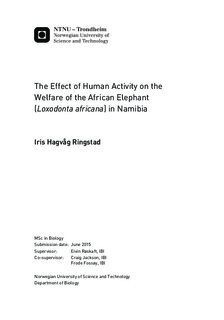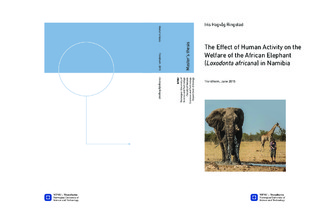| dc.description.abstract | The African elephant (Loxodonta africana) is vital in several African ecosystems, accentuating the importance of conserving them. However, conservation efforts are constantly complicated due to human population growth. Anthropogenic disturbances has been linked with elevated stress levels in animals, which in turn is associated with decreased welfare and fitness. The present study seeks to replicate a previously conducted study of elephants in Tanzania, with the goal of evaluating the current Namibian elephant population and increasing the knowledge of what anthropogenic disturbances are affecting, if at all, the welfare of elephants. The study was done as a comparative study between areas with high (outside protected area) and low (inside protected area) human interference, using the non- invasive method of measuring the concentration of faecal glucocorticoid metabolites as a measure of stress. During 32 days in the field, a total of 90 dung samples were collected and analysed. The results supported the hypothesis with a significantly higher stress level recorded outside the protected national park, Etosha (ENP), compared to inside ENP. Further statistical analyses showed that the only variable explaining this variation significantly was area (inside vs. outside). The findings suggest that anthropogenic disturbances are a contributing factor, elevating stress levels in elephants residing in non-protected areas, potentially affecting their welfare. Human-elephant conflicts (HEC) seem to be an important underlying cause, hence emphasizing the importance of seeking to prevent and minimize HEC in future conservation work. The low physiological stress levels measured inside ENP further demonstrate the importance of protected areas for conservation purposes. | |

